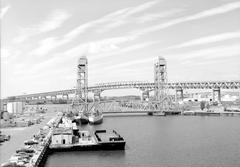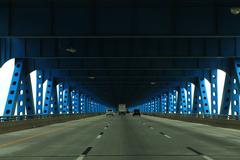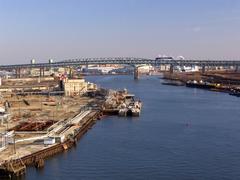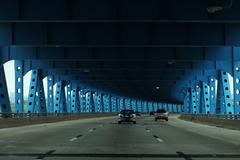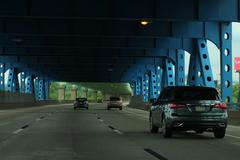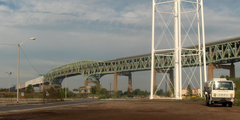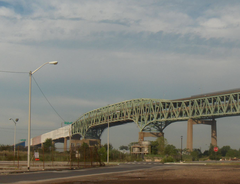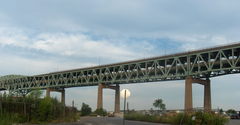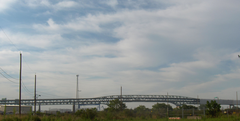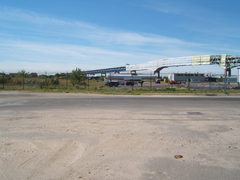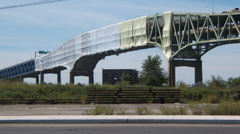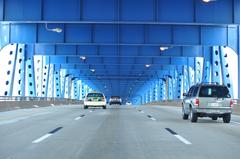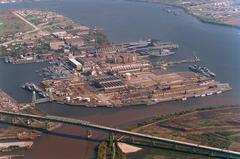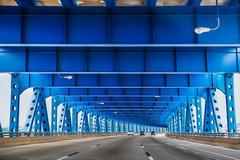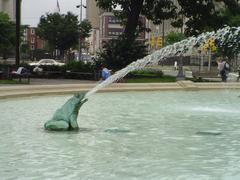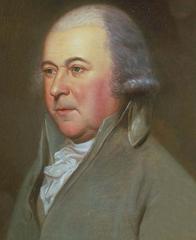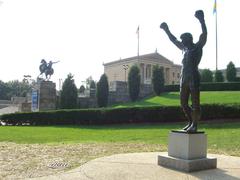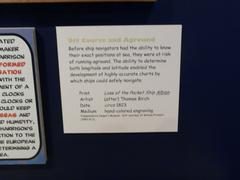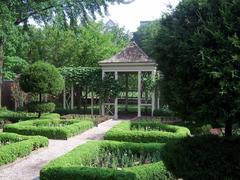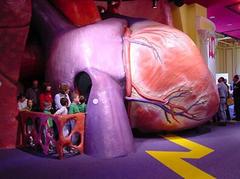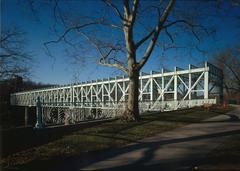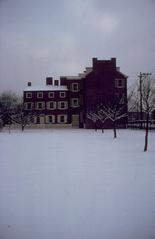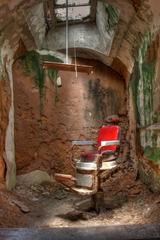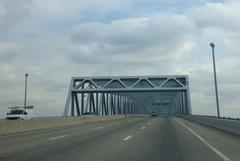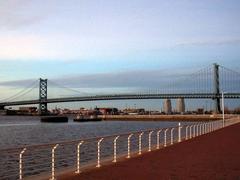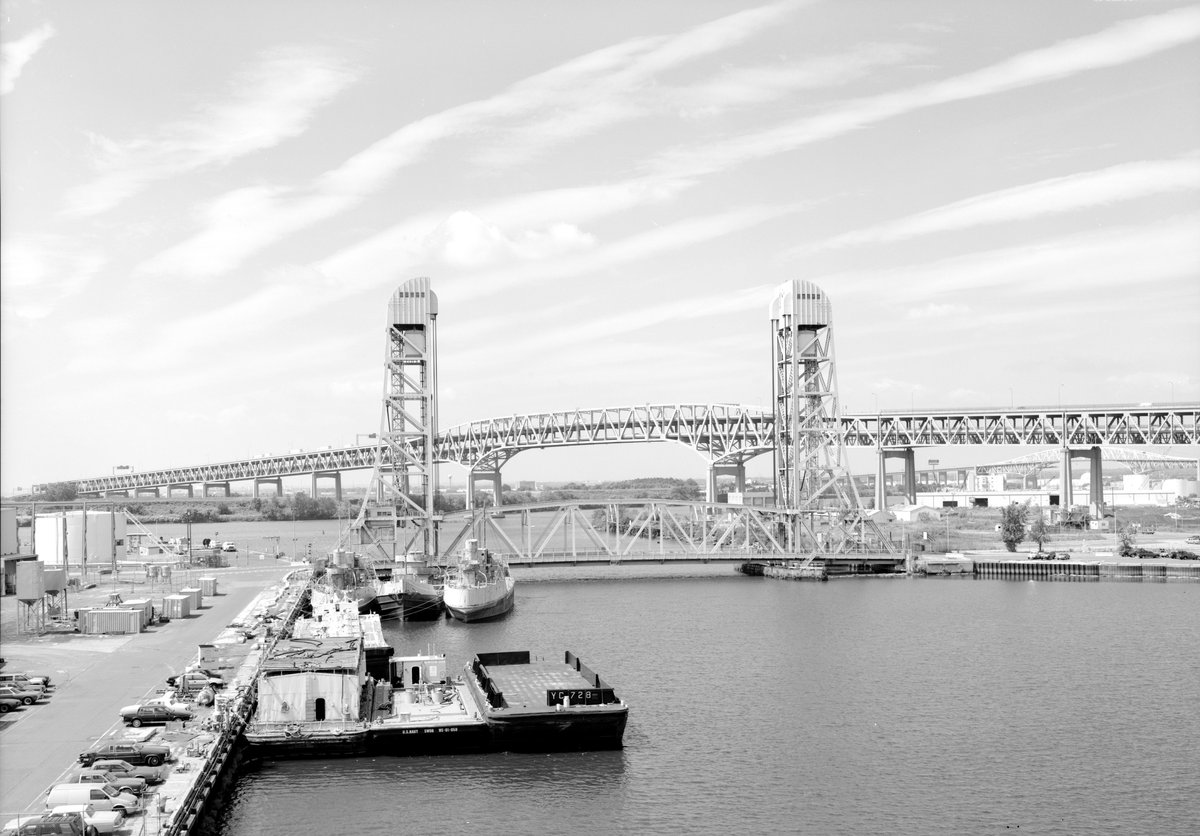
Comprehensive Guide to Visiting Girard Point Bridge, Philadelphia, United States: History, Significance, Visitor Tips, and Everything Tourists Need to Know for a Memorable Experience
Date: 18/08/2024
Introduction
The Girard Point Bridge in Philadelphia stands as a monumental feat of engineering and a significant historical landmark. This double-decked cantilever bridge, spanning the Schuylkill River, connects South Philadelphia to the Girard Point area and plays a crucial role in the city’s transportation network. Constructed between the early 1960s and 1973, the bridge was part of the larger Interstate 95 (I-95) project, aiming to create a continuous highway along the East Coast of the United States. The bridge’s design includes two levels, with the upper deck carrying northbound traffic and the lower deck carrying southbound traffic, making it one of the longest bridges in the region (bridgestunnels.com). This guide provides a comprehensive overview of the history, significance, and visitor tips for those looking to explore this iconic structure.
Table of Contents
- Introduction
- Early Conception and Construction
- Design and Engineering
- Structural Features
- Historical Significance
- Renovations and Upgrades
- Current Usage and Traffic
- Visitor Tips
- Future Prospects
- FAQ
- Conclusion
Early Conception and Construction
The Girard Point Bridge, an integral part of Philadelphia’s infrastructure, was conceived as a solution to the growing transportation needs of the city. The bridge spans the Schuylkill River, connecting South Philadelphia to the Girard Point area. The initial planning and construction phases were driven by the necessity to facilitate smoother traffic flow and improve connectivity between different parts of the city.
Design and Engineering
The Girard Point Bridge is a double-decked cantilever bridge, a design chosen for its ability to support heavy traffic loads and provide durability. The bridge’s construction began in the early 1960s, with the aim of creating a robust structure that could withstand the test of time and the increasing demands of vehicular traffic. The bridge was completed and opened to the public in 1973, marking a significant milestone in Philadelphia’s transportation history.
Structural Features
The bridge’s design includes two levels, with the upper deck carrying northbound traffic and the lower deck carrying southbound traffic. This double-deck configuration was a strategic decision to manage the high volume of vehicles efficiently. The total length of the bridge is approximately 5,183 feet, making it one of the longest bridges in the region. The cantilever design allows for large spans without the need for numerous piers in the water, which helps in maintaining the navigability of the Schuylkill River.
Historical Significance
The Girard Point Bridge holds historical significance as it was part of the larger Interstate 95 (I-95) project, which aimed to create a continuous highway along the East Coast of the United States. The bridge’s construction was a critical component of this project, facilitating the movement of goods and people along this major transportation corridor. The bridge also played a role in the economic development of the surrounding areas by improving access and connectivity.
Renovations and Upgrades
Over the years, the Girard Point Bridge has undergone several renovations and upgrades to ensure its structural integrity and safety. One of the major renovation projects took place in the early 2000s, focusing on repairing and reinforcing the bridge’s steel components. These upgrades were essential to extend the bridge’s lifespan and accommodate the increasing traffic demands.
Current Usage and Traffic
Today, the Girard Point Bridge is a vital artery for Philadelphia’s transportation network. It carries a significant volume of traffic daily, serving as a crucial link for commuters and commercial vehicles. The bridge’s strategic location and design make it an indispensable part of the city’s infrastructure, supporting both local and interstate travel.
Visitor Tips
For those interested in visiting the Girard Point Bridge, there are a few tips to keep in mind:
- Best Time to Visit: The bridge offers stunning views of the Schuylkill River and the Philadelphia skyline. Early morning or late afternoon are ideal times to visit for the best lighting and minimal traffic.
- Safety: As the bridge is primarily a vehicular thoroughfare, pedestrian access is limited. Visitors should exercise caution and follow all safety guidelines when near the bridge.
- Photography: The bridge’s unique design and scenic surroundings make it a popular spot for photography. Ensure you have a good vantage point for capturing the best shots.
- Nearby Attractions: The Girard Point Bridge is close to several notable attractions, including the Philadelphia Navy Yard and FDR Park. These locations offer additional opportunities for exploration and enjoyment.
Future Prospects
Looking ahead, the Girard Point Bridge is expected to continue playing a pivotal role in Philadelphia’s transportation landscape. Ongoing maintenance and potential future upgrades will ensure that the bridge remains a reliable and efficient route for years to come. The bridge’s historical and functional significance underscores its importance as a key infrastructure asset for the city.
FAQ
Q: What are the Girard Point Bridge visiting hours? A: As the Girard Point Bridge is primarily a vehicular thoroughfare, it does not have specific visiting hours. However, the best times to view the bridge are early morning or late afternoon.
Q: Is there an admission fee or tickets required to visit the Girard Point Bridge? A: No, there are no tickets or admission fees to visit the Girard Point Bridge.
Q: Are there any guided tours available for the Girard Point Bridge? A: Currently, there are no official guided tours for the Girard Point Bridge. However, nearby attractions like the Philadelphia Navy Yard may offer tours that include views of the bridge.
Q: What are some nearby Philadelphia historical sites? A: Nearby historical sites include the Philadelphia Navy Yard and FDR Park, both of which offer additional opportunities for exploration and enjoyment.
Conclusion
The Girard Point Bridge is more than just a transportation link; it is a symbol of Philadelphia’s engineering prowess and a vital component of the city’s infrastructure. Its historical significance, economic impact, and cultural value make it a must-visit landmark for both locals and tourists. The bridge offers stunning views of the Schuylkill River and the Philadelphia skyline, making it a popular spot for photography. With ongoing maintenance and future improvement projects, the bridge is set to continue serving the region for many years to come (penndot.pa.gov). For more updates and visitor tips, follow us on social media and check out our other related posts.
References
- Girard Point Bridge, 2024, American Bridge Company (bridgestunnels.com)
- Girard Point Bridge, 2024, Pennsylvania Department of Transportation (penndot.pa.gov)
- Girard Point Bridge, 2024, Sygic Travel (travel.sygic.com/en/poi/girard-point-bridge-poi:33115099)
- Girard Point Bridge, 2024, Visit Philly (visitphilly.com/articles/philadelphia/must-see-attractions-philadelphia)
- Girard Point Bridge, 2024, Construction Journal (constructionjournal.com/projects/details/d41c2484e46e4bb49c014ab56ffc8f57)
- Girard Point Bridge, 2024, PHL17 (phl17.com/phl17-news/penndot-announces-repairs-on-i-95-girard-point-bridge)
